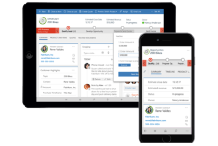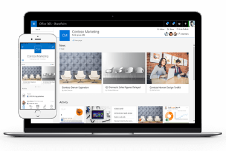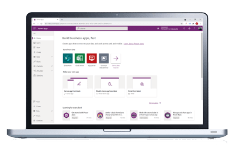This article shows using Excel to view ULS logs.
You can use your server's Unified Logging Service (ULS) logs to troubleshoot queue issues in Microsoft Office Project Server 2007. The queue entry information in ULS logs is especially useful in conjunction with the information in the Manage Queue page in Project Web Access, or with Windows Server Event Viewer.
This article describes:
-
How to configure ULS log-file settings
-
How to configure Microsoft Office Excel 2007 to view ULS log files
-
How to search for specific queue jobs in the ULS logs
-
Types of queue job entries in the ULS logs
-
Queue entry parameters
-
Best practices for troubleshooting queue issues
Configuring ULS log file settings
You can configure the ULS log file settings by using the SharePoint Central Administration Web site. On this page, you can:
-
Specify a default location to store log files.
-
Specify the maximum number of log files to be stored on the server.
-
Specify the duration of time (in minutes) that each log file covers.
Note:The log file settings apply to all servers in the farm.
Configure ULS log file settings
-
In Central Administration, click Operations. In the Logging and Reporting section, click Diagnostic logging.
-
On the Diagnostic logging page, in the Trace Log section, verify the location specified in the Path field. The default location is C:Program FilesCommon FilesMicrosoft SharedWeb server extensions12LOGS. To change the location, type a new one in the Path field.
-
In the Number of log files field, specify the maximum number of log files that are saved to each server in the farm. The default value is 96.
-
In the Number of minutes to use a log file field, enter the duration (in minutes) you want for each log file. The default value is 30.
-
Click OK.
New log files will be named in the following format: servername-year/month/day-time.log
For example, a log file created on June 8, 2008 at 1:20PM on a server named "Contoso" would be named contoso-20080608-1320.log. If the Number of minutes to use a log file field is set to 30, you would subsequently see the following files created: contoso-20080608-1320.log contoso-20080608-1350.log, contoso-20080608-1420.log, contoso-20080608-1450.log, and so on.
Configuring Office Excel 2007 to view the ULS log files
Log files can easily be viewed in most text editors and through Microsoft Office Excel. Excel allows log files to be sorted by column and also provides better readability (especially for rows that contain long strings of data).
Configure Office Excel 2007 to view trace log files
-
In Office Excel 2007, click the Office button, and then click Open.
-
In the Open dialog box, browse to the location of your log files.
-
In the Files of Types list (located to the right of the File name field), select All Files (*.*) so that you are able to see the log files.
Note:To arrange the file list by date, right-click an open area in the file list, click Sort By, and then click Date modified.
-
From the file list, select the log file you want to view.
-
After the log file appears, on the Home tab, click Sort & Filter, and then click Filter. This allows you to filter all rows by specific criteria. For example, if you wanted to view only Project Server entries, you would click the Filter menu in the Area column, and then clear all other options except Project Server.
-
Select the Message column. On the Home tab, click Format, and then click Format Cells. On the Format Cells page, click Alignment, and in the Text Control section select Wrap text. Click OK. Message data can be very lengthy, so configuring the column to wrap text makes the data easier to view.
Searching for specific queue jobs
To look for a specific entry in a log file, you must use the Manage Queue Jobs page in Project Web Access in conjunction with the ULS logs.
Each queue job has a Job Group ID. You use this data to search a log file. To begin with, you must add the JobGroup ID column to your Job Grid. Once you have done that, you can then check for a particular value in the ULS log file.
Add the Job Group ID column to the Job Grid
-
On the Server Settings page in Project Web Access, in the Queue section, click Manage Queue.
-
On the Manage Queue Jobs page, click Columns.















